At the peak of their era, the Vikings were known as fearsome raiders, savvy traders, and peerless explorers.
Their mental toughness and spiritual fortitude played significant roles in their successes, but so too did the particular type of vessels that carried them on their journeys, whether to sack a coastal town, ferry a massive load of cargo, or navigate uncharted waters in search of hospitable new lands.
Viking longboats featured long, slender profiles with shallow drafts, which enabled them to navigate along coastlines with great stealth and sail up rivers and tributaries.
Powered by both oarsmen and sails, longboats ferried Viking warriors to battle and to trade goods.
One of the Viking Age’s enduring symbols is the longboat, which was synonymous with the Vikings’ irrepressible seafaring nature.
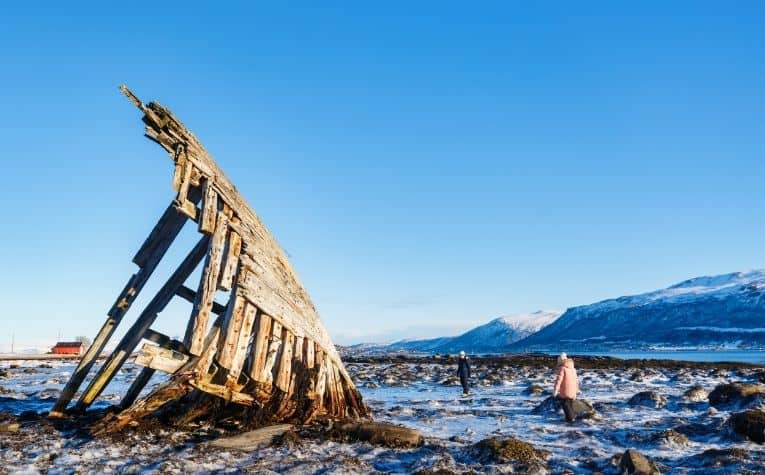
So central were these vessels to their very existence that prominent Norse chieftains and warriors were buried with their longboats.
Although longboat design was not revolutionary at the time, it was perfected during the Viking Age and flawlessly utilized by the Vikings.
Besides ships, another critical piece of equipment for the Vikings was their shields. See The Viking Shield: Why Is It Round, Wooden, and Painted? to learn more.
The Design of Longboats Suited the Vikings’ Needs Perfectly
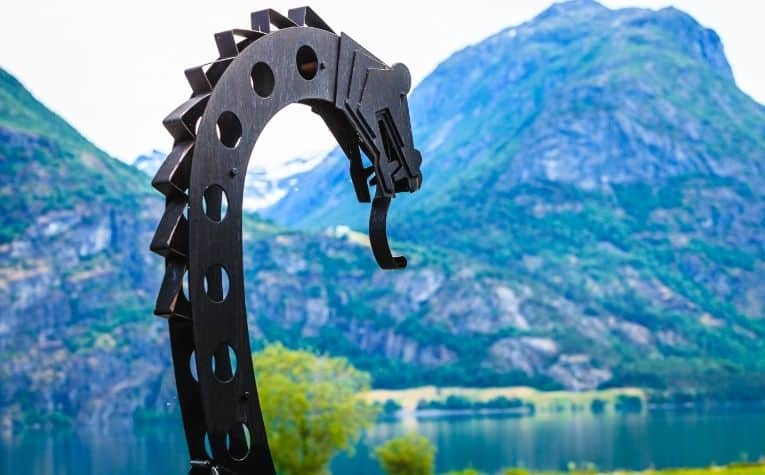
From design and engineering standpoints, longboats suited the Vikings’ needs perfectly.
To conduct their military and trade missions, the Vikings required vessels that could perform on rough, open waters and still navigate rivers and shallow bodies of water.
They needed to carry warriors to and from their targeted destination and have stowing capacity to transport goods for trade.
Unlike the ships used by other European countries and powers during the Viking era, Norse longboats did not need a harbor for docking.
The Vikings had an array of beliefs about various creatures in Scandinavia. See What Dragons Meant to Vikings to learn more.
This put any population center near any body of water within reach and permitted the Vikings to set up remote bases or settlements well out of harm’s way.
Here are the main characteristics of longboats that made them perfectly suited for the Vikings:
Shallow draft – This was an essential feature of Viking longboats as it enabled these vessels to navigate shallow bodies of water, such as rivers that traveled far inland from the coastline.
This put many populated areas within striking range of Viking warriors and their longboats, as many towns and villages in Europe dotted riverbanks that were not accessible with larger ships.
The shallow draft of Viking longboats also enabled them to be landed on beaches and coastlines, much like the amphibious naval craft used by the world’s navies.
This enhanced the Vikings’ quick-strike capability where warriors could land and quickly disembark, attack their target, then return to their vessel and depart before their victims had the opportunity to regroup.
Often, the element of surprise is what ensured the success of Viking military campaigns.
Coastal monasteries, villages, and towns were defenseless against the stealthy arrival of the Norse invaders and the speed with which they laid siege and withdrew.
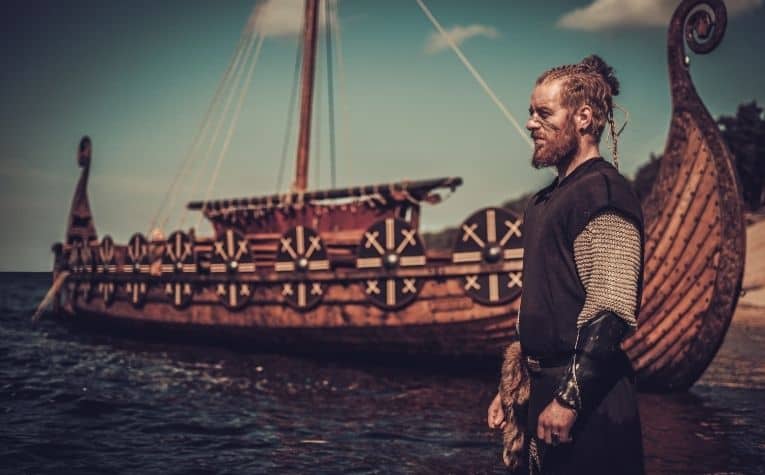
Sailing close to the wind – Another advantage offered by the Viking longboat was its ability to sail close to the wind.
While other sailing vessels of that time would have struggled to navigate head-on into the direction of the wind, Norse sailors utilized the innovative beitass (a spar) to provide structural stability. They performed a sailing technique known as tacking today.
This combination of Viking sailing skills and innovative ship design gave the Norse people the confidence to set sail in any direction and under virtually any wind condition.
Oars also powered longboats and could thus rely on good old fashioned rowing for propulsion.
Flexibility – One of the distinguishing features of Viking longboats was how the wood planks that form its hull were laid one on top of one another in an overlapping fashion.
This shipbuilding technique, known as the clinker or lapstrake method, resulted in far more flexible vessels than ships built using conventional methods standard throughout Europe.
This flexibility allowed Viking longboats to withstand the sometimes violent waters of the Northern Atlantic much in the way that modern aircraft wings are designed to bend and bounce with shifts in air currents and when encountering turbulence.
The unique clinker design of Viking longboat hulls enabled them to flex and absorb vicious waves and swells, rather than taking the brunt of this force head-on and possibly fracturing or even rupturing.
As a result, these Norse naval marvels were well-suited for long ocean journeys such as voyages to Iceland, Greenland, and other parts of North America.
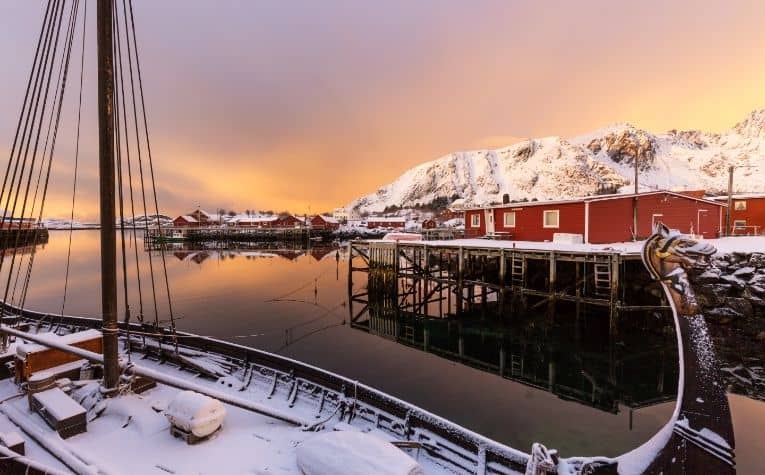
Portage – Another advantage of the clinker method of shipbuilding was that it produced lighter vessels that allowed the Vikings to utilize portages (i.e., carry their longboats over land) around impassable stretches of water that were frozen over or dried up and between bodies of water.
Double-ended – Many Viking longboats were double-ended, meaning that they were symmetrical from bow to stern.
In other words, the front of the ship was shaped like the rear, which was another incredible feature of these Norse vessels.
By designing their longboats this way, the Vikings could navigate their vessels forward or backward without turning the entire ship around.
This would be highly advantageous when sailing upstream in a river that was not wide enough for an ordinary vessel to turn entirely around to head back downstream.
A Viking longboat could reverse its sail, or simpler yet, the oarsmen could row in the opposite direction.
Being able to reverse direction was a godsend when sailing through the Northern Atlantic’s frigid waters in the winter when impassable sea ice was not only an obstacle that had to be navigated around but could potentially cripple or sink a ship if struck. [1]
A lot of people wonder what the Vikings really looked like. Do modern depictions get it right? See The Viking Dress Code: What They Wore and How to learn more.
The Vikings Had Different Types of Longboats
Although they were known for raiding and pillaging near and distant lands, the Vikings were people whose livelihood depended on their ability to conquer the seas.
Their unique design and construction enabled Viking longboats to travel incredible distances, including Asia to the east and, more famously, North America to the west.
So in tune were the Vikings with the bodies of water they traversed and the unpredictable conditions they could face from one moment to the next that the Old Norse language they spoke had roughly 150 different words for waves. [2]
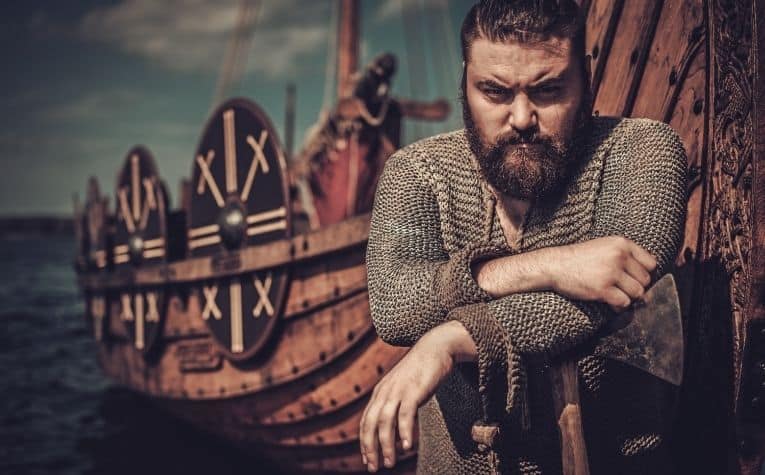
From a shipbuilding standpoint, the Vikings honed their craft into an art form.
Their highly developed skills enabled them to construct four different types of longboats, each uniquely suited for particular activities:
- Karvi – These were among the smaller longboats used by the Vikings and were used primarily for trading, fishing, and transporting. They may also have been used for certain military purposes. Karvi longboats typically had 6 to 16 rowing benches and were ideally suited for shallow waters.
- Snekkja – This vessel, whose name translates to snake, featured a slender, streamlined design perfectly suited for navigating deep fjords and stormy Atlantic seas. Its unique hull construction could land directly on beaches and made the Snekkja a useful military vessel, particularly for missions requiring stealth.
- Skeid – Used primarily for military purposes, the Skeid featured 30 or more rowing benches and could transport a small battalion of Viking warriors to battle. The Skeid longboat (translation: slider) could measure over 120 feet in length.
- Drakkar – The iconic dragon ship of the Viking fleet, these vessels were immediately recognizable from the carvings of dragons and serpents at the bow (and in some cases, the stern) and along the hull. It is theorized that these symbols were intended to frighten evil spirits at sea while also intimidating people throughout Europe who fell victim to their raids. [3]
Conclusion
The Norse longboat was an engineering marvel that established the Viking Age and cemented the Vikings’ legacy as fearsome warriors and fearless explorers.
References:
[1] https://www.asme.org/topics-resources/content/engineering-the-viking-longboat
